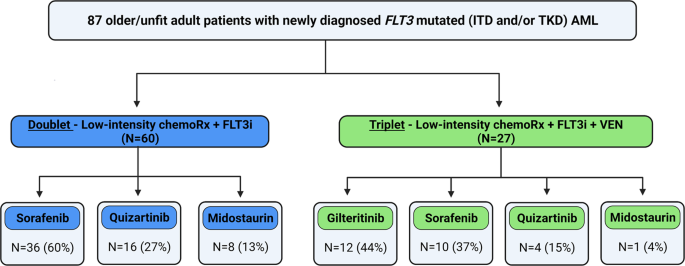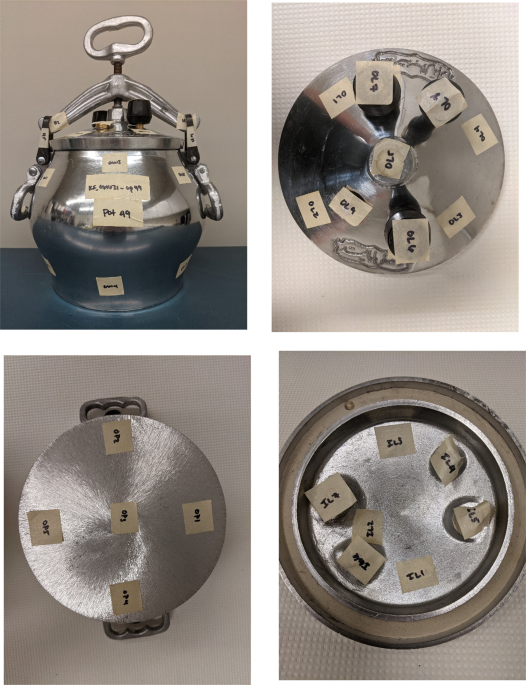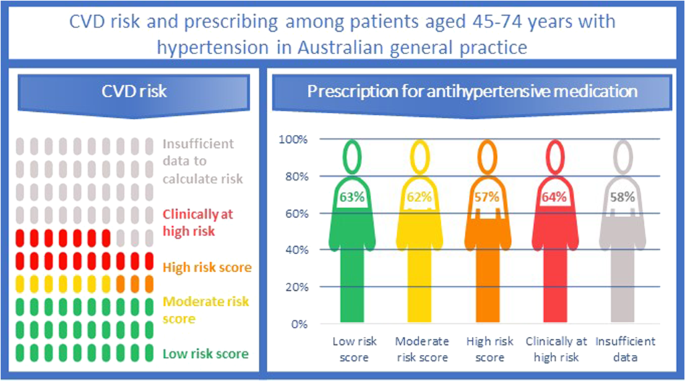|
Medicine RSS-Feeds by Alexandros G. Sfakianakis,Anapafseos 5 Agios Nikolaos 72100 Crete Greece,00302841026182,00306932607174,alsfakia@gmail.com
Πληροφορίες
Δευτέρα 2 Μαΐου 2022
Incidences and characteristics of primary lung malignancies in childhood i
Efficacy and toxicity of weekly paclitaxel, carboplatin, and cetuximab as induction chemotherapy or in cases of metastases or relapse for head and neck cancer with a focus on elderly or frail patients
|
Emergence of dalbavancin, vancomycin, and daptomycin non-susceptible Staphylococcus aureus in a patient treated with dalbavancin: Case report and isolate characterization
|
Unsuspected clonal spread of Methicillin-resistant Staphylococcus aureus causing bloodstream infections in hospitalized adults detected using whole genome sequencing
|
Comparison of Hydration Index, Percent Hydration, and Trans-Epidermal Water Loss Measurements for Dermal Exposure and Risk Assessment
|
Hypomethylating agent and venetoclax with FLT3 inhibitor “triplet” therapy in older/unfit patients with FLT3 mutated AML
|
Investigating aluminum cookpots as a source of lead exposure
|
Predicted cardiovascular disease risk and prescribing of antihypertensive therapy among patients with hypertension in Australia using MedicineInsight
|
Screening auf Mangelernährung bei Kopf-Hals-Tumor-Patienten vor onkologischer Therapie
|
The tight rope act: A multicenter regional experience of tourniquets in acute trauma resuscitation
|
Gastroesophageal resuscitative occlusion of the aorta prolongs survival in a lethal liver laceration model
|
Extravasation and outcomes in computed tomography and angiography in patients with pelvic fractures requiring transcatheter arterial embolization: A single-center observational study
|
Αρχειοθήκη ιστολογίου
-
►
2023
(366)
- ► Φεβρουαρίου (184)
- ► Ιανουαρίου (182)
-
▼
2022
(2814)
- ► Δεκεμβρίου (182)
- ► Σεπτεμβρίου (213)
-
▼
Μαΐου
(251)
-
▼
Μαΐ 02
(18)
- Incidences and characteristics of primary lung mal...
- Efficacy and toxicity of weekly paclitaxel, carbop...
- Emergence of dalbavancin, vancomycin, and daptomyc...
- Unsuspected clonal spread of Methicillin-resistant...
- Comparison of Hydration Index, Percent Hydration, ...
- Hypomethylating agent and venetoclax with FLT3 inh...
- Investigating aluminum cookpots as a source of lea...
- Predicted cardiovascular disease risk and prescrib...
- Screening auf Mangelernährung bei Kopf-Hals-Tumor-...
- The tight rope act: A multicenter regional experie...
- Gastroesophageal resuscitative occlusion of the ao...
- Extravasation and outcomes in computed tomography ...
- Evaluating the complex association between Social ...
- The effect of tranexamic acid dosing regimen on tr...
- Direct to OR resuscitation of abdominal trauma: An...
- Beta blockade in TBI: Dose-dependent reductions in...
- DNA Methylation subclass Receptor Tyrosine Kinase ...
- Artificial Enamel – Stronger and Durable finds oth...
-
▼
Μαΐ 02
(18)
- ► Φεβρουαρίου (264)
- ► Ιανουαρίου (262)
-
►
2021
(3815)
- ► Δεκεμβρίου (229)
- ► Σεπτεμβρίου (276)
- ► Φεβρουαρίου (64)
-
►
2020
(5754)
- ► Δεκεμβρίου (401)
- ► Σεπτεμβρίου (365)
- ► Φεβρουαρίου (754)
- ► Ιανουαρίου (894)
-
►
2019
(146)
- ► Δεκεμβρίου (19)
- ► Σεπτεμβρίου (54)








